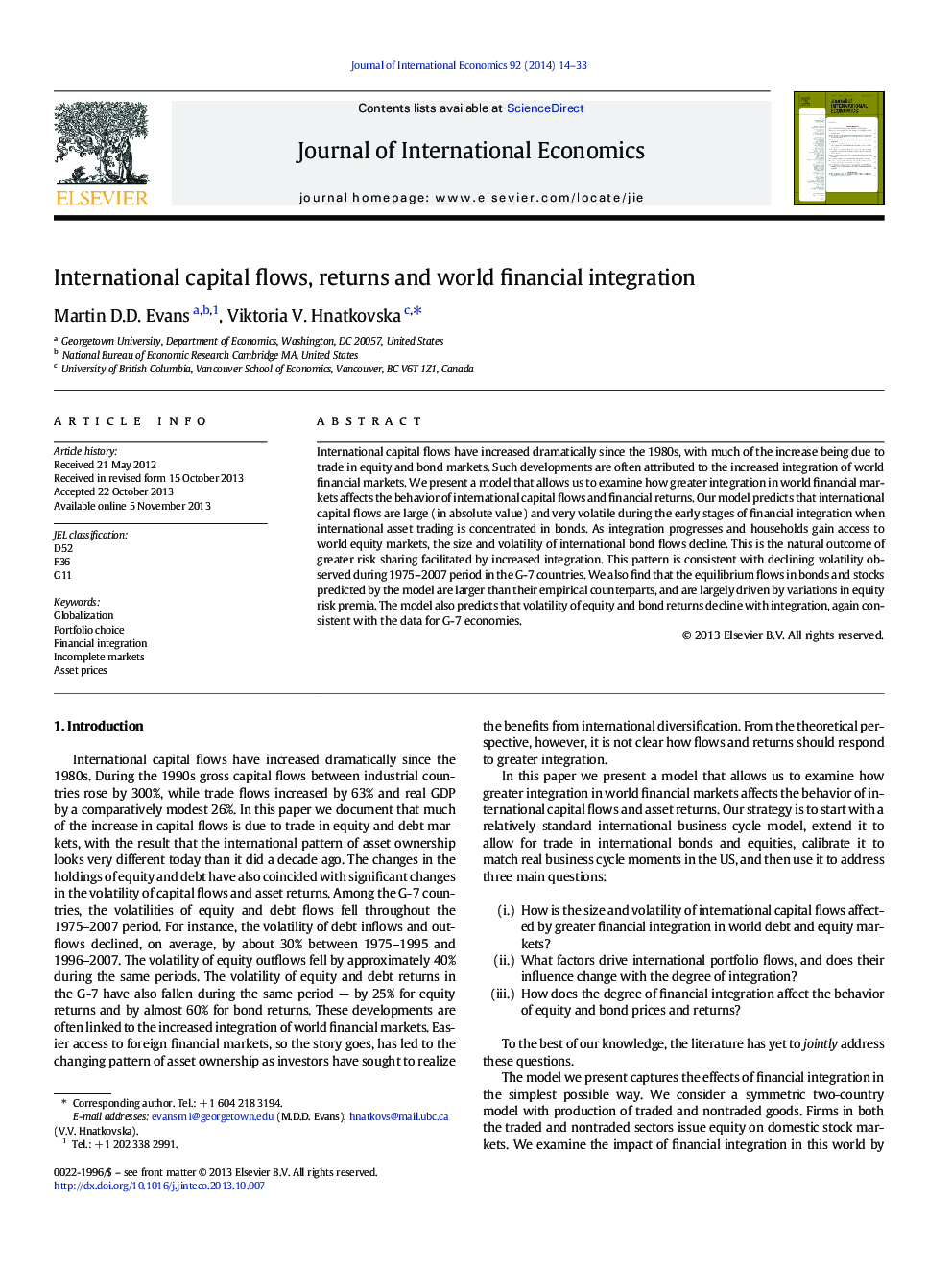| Article ID | Journal | Published Year | Pages | File Type |
|---|---|---|---|---|
| 962465 | Journal of International Economics | 2014 | 20 Pages |
•To summarize the volatility of capital flows and asset returns in the G-7 countries•To develop a structural framework to analyze the effects of financial integration•To use the model to study factors driving international capital flows•To contrast properties of capital flows and returns in the model and in the data•To show that a standard model of international business cycles reproduces the facts
International capital flows have increased dramatically since the 1980s, with much of the increase being due to trade in equity and bond markets. Such developments are often attributed to the increased integration of world financial markets. We present a model that allows us to examine how greater integration in world financial markets affects the behavior of international capital flows and financial returns. Our model predicts that international capital flows are large (in absolute value) and very volatile during the early stages of financial integration when international asset trading is concentrated in bonds. As integration progresses and households gain access to world equity markets, the size and volatility of international bond flows decline. This is the natural outcome of greater risk sharing facilitated by increased integration. This pattern is consistent with declining volatility observed during 1975–2007 period in the G-7 countries. We also find that the equilibrium flows in bonds and stocks predicted by the model are larger than their empirical counterparts, and are largely driven by variations in equity risk premia. The model also predicts that volatility of equity and bond returns decline with integration, again consistent with the data for G-7 economies.
